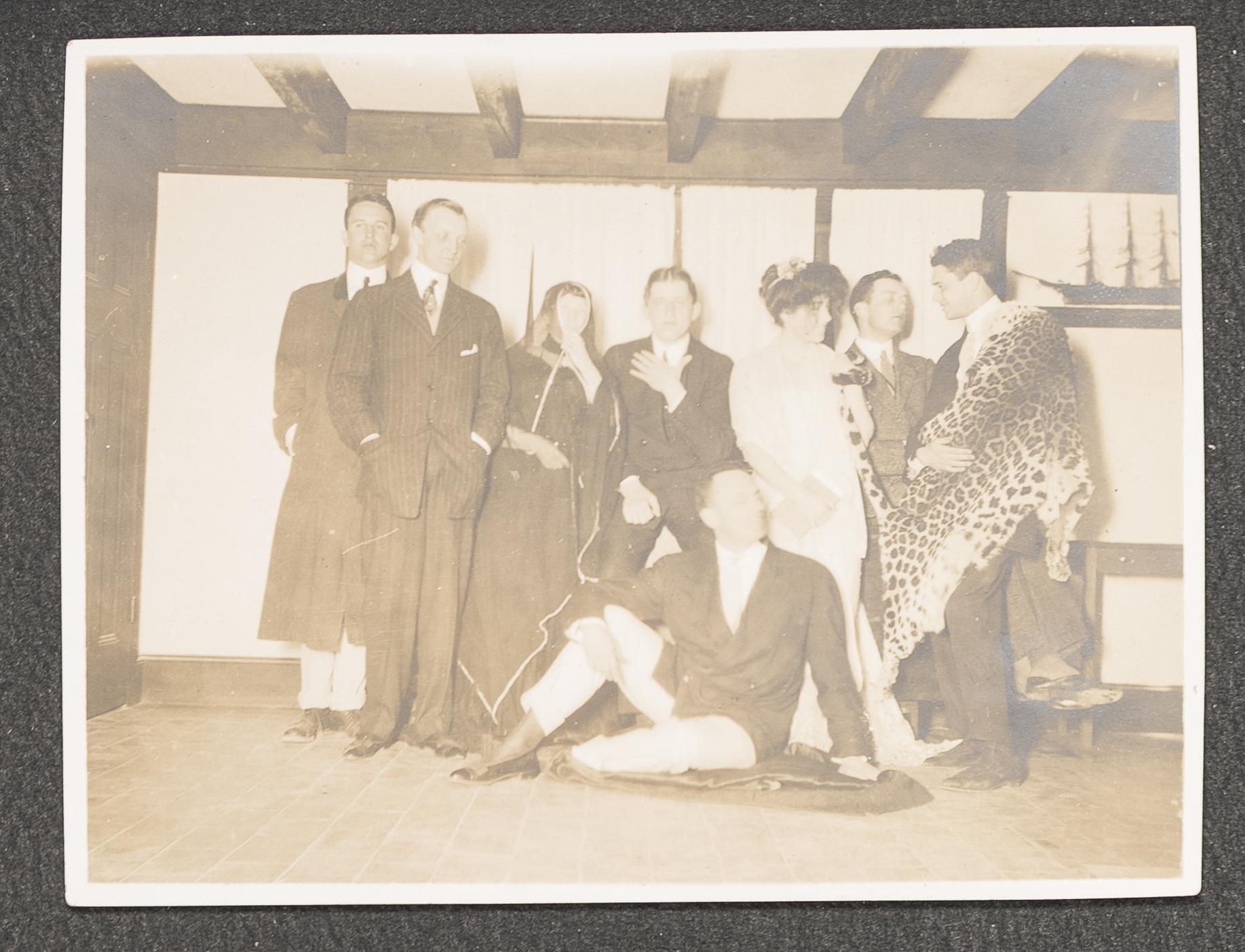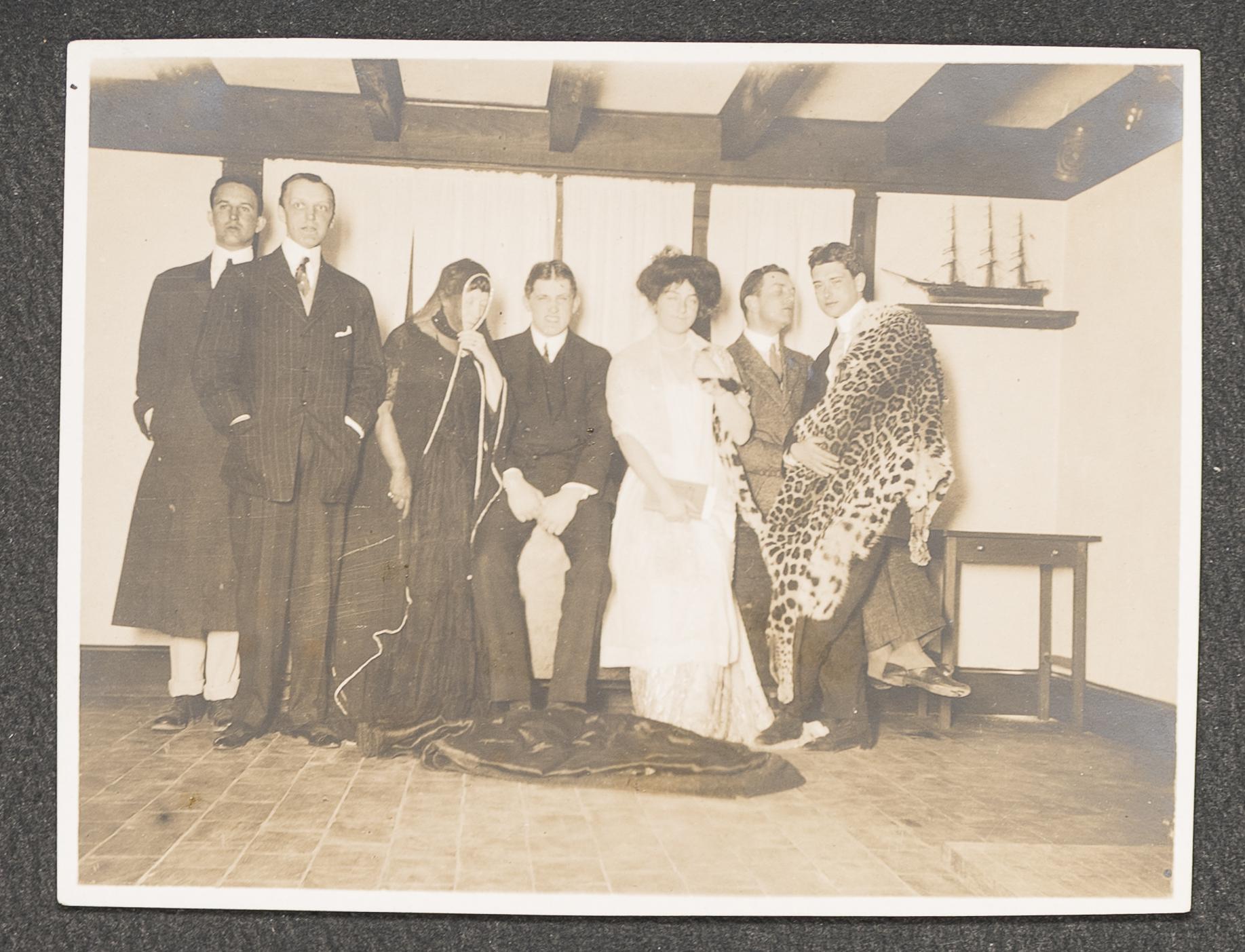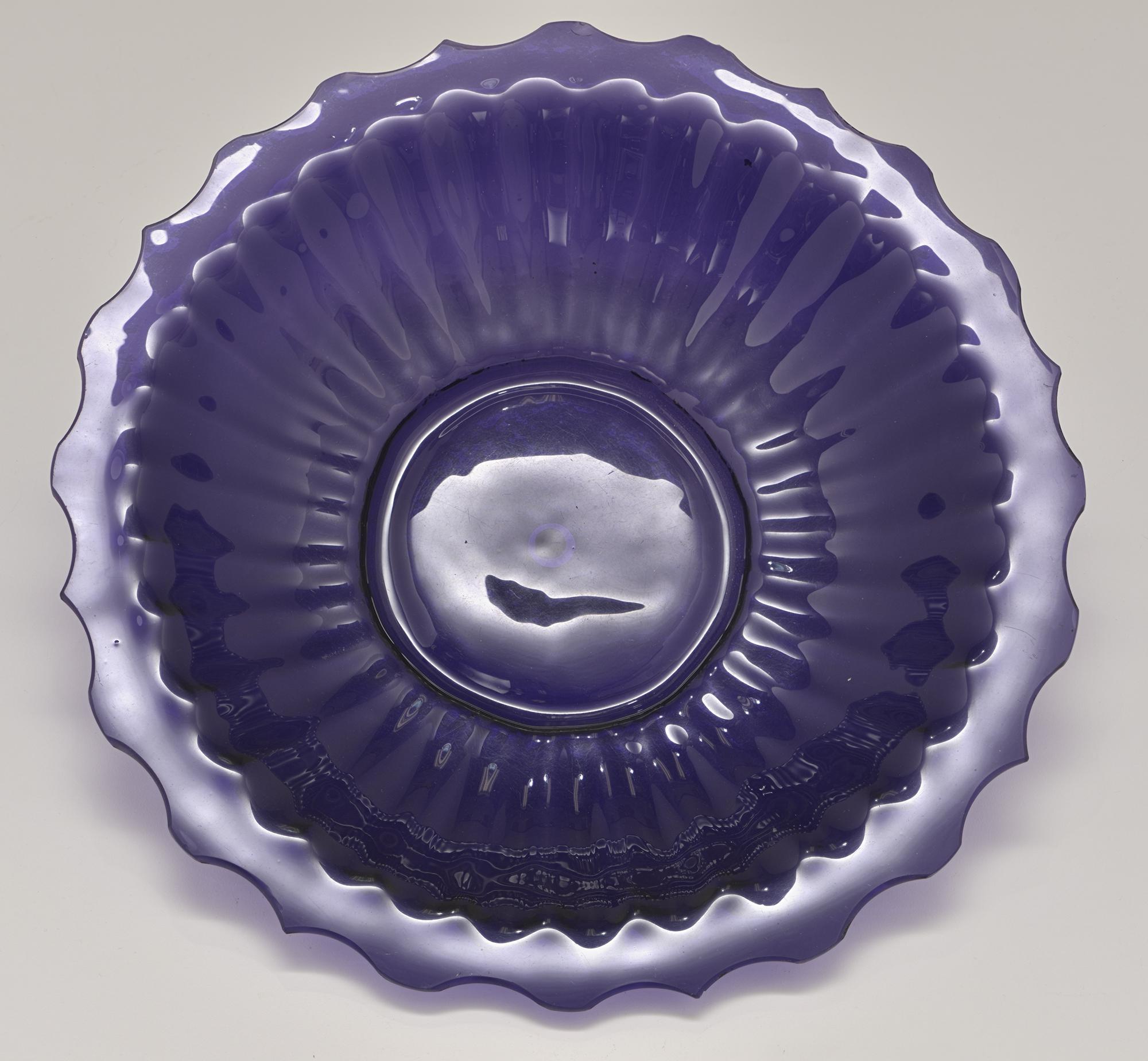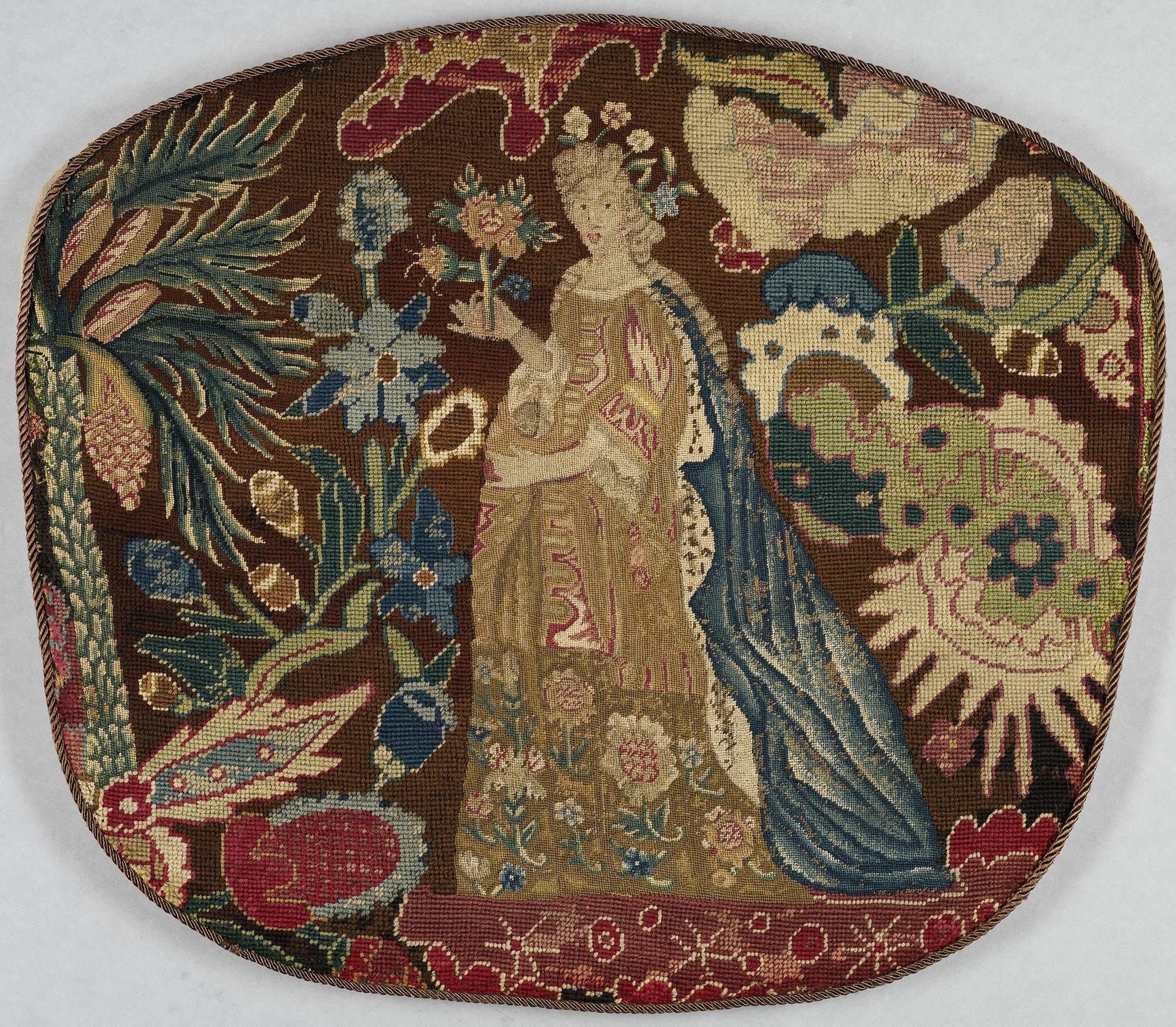In the Chinese Loggia, there is a peculiar object against the otherwise transparent wall of windows. Fragments of stained-glass faces peak out, surrounded by and soldered to blocks of solid-colored glass. The effect is almost as if someone had opened a jigsaw puzzle, poured the pieces on the floor, and pieced them together. There is—like many of the more unassuming objects in the museum—a rich story behind this mosaic of stained glass.
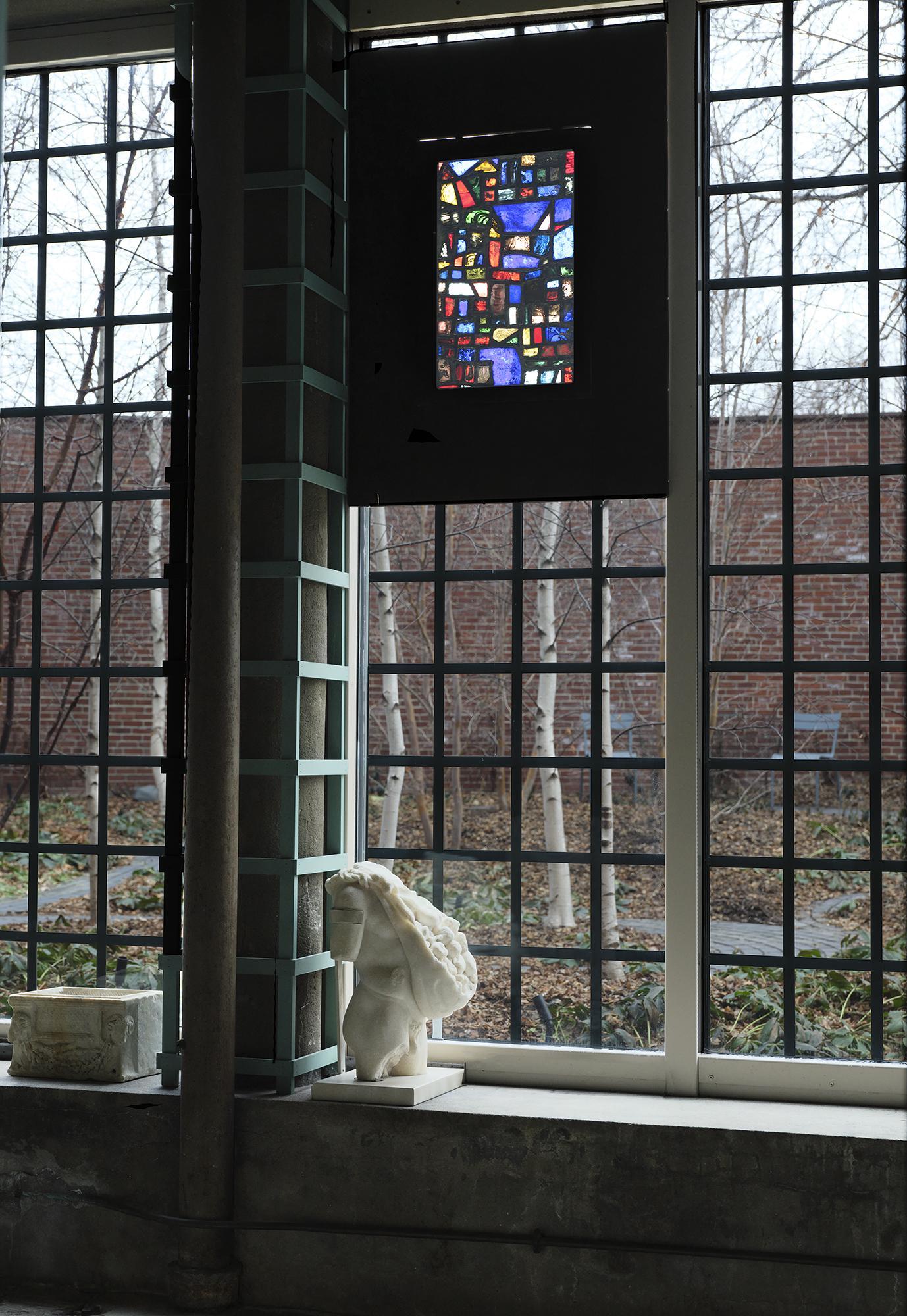
The Chinese Loggia with fragments of stained glass from Reims Cathedral, 18th century
Isabella Stewart Gardner Museum, Boston
This piece was designed by Henry Davis Sleeper, the noted and prolific interior decorator. He was a good friend of Isabella Stewart Gardner from the time they met in 1907 until her death in 1924. Sleeper was a member of “Dabsville,” which was a small group of artists and intellectuals who lived on Eastern Point in Gloucester, Massachusetts. (The name Dabsville was based on an acronym of initials of the group’s members.) Gardner was a frequent visitor as well as an honorary member of the group.
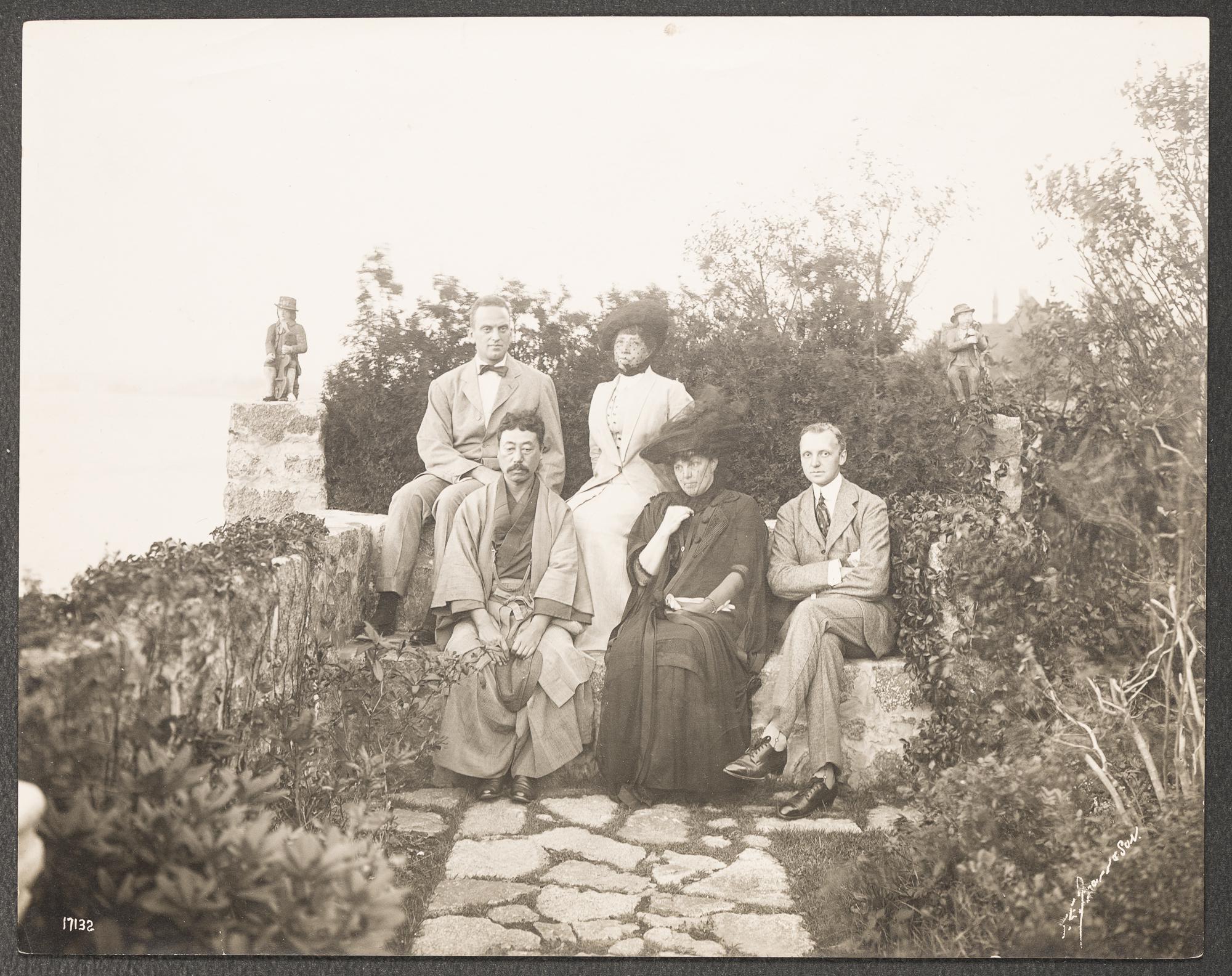
Thomas E. Marr and Son (active Boston, 1910-1942), A. Piatt Andrew, Isabella Stewart Gardner, Okakura Kakuzo, Caroline Sinkler, and Henry Davis Sleeper on the terrace of Red Roof, A. Piatt Andrew’s home, Gloucester, Massachusetts, 6 October 1910
Isabella Stewart Gardner Museum, Boston (ARC.008524)
Dabsville was a lively place, where parties were held regularly. On the surface, these parties seem no different from other upper class coastal gatherings of the time; yet, Dabsville provided an important place for those deemed “other” by the social norms of the time.¹ Many of the residents and their guests were single, unmarried, and would be categorized as gay or queer in today’s understanding of sexuality. These parties offered an opportunity for folks to mingle away from a heteronormative gaze. Photos give a glimpse into some of the campiness on display including frequent costume parties.
Despite his reputation as a soft spoken man, Sleeper hosted some of these parties, wore costumes, and was known to tell a dirty joke or two. At one dinner the lifelong bachelor apparently shocked a female guest and her Victorian sense of propriety by responding to her anecdote about a “crazy man” who broke into her friends’ home and crawled into bed with them. Sleeper retorted that he knew of a similar story, but the man wasn’t crazy.²

Henry Davis Sleeper, early 20th century
Historic New England
Based on surviving correspondence and belongings, as well as the oral history from a descendent, Sleeper has been identified as a gay man. In particular, his relationship with his and Isabella’s mutual friend—fellow Dabsville resident, economist, and politician A. Piatt Andrew—may have skewed amorous. His letters to Andrew indicate romantic interest. He compared Andrew to Guy Wetmore Carryl (who Sleeper likely had a romantic relationship with)³ and often included snippets of poetry and longing passages. Yet, it was most likely an unrequited romance.

Henry Davis Sleeper kept this nineteenth-century mourning style collage above his reading nook at Beauport
Historic New England
The pieces were gathered by Chester Howell, an ambulance driver, after the German bombardment of Reims Cathedral on September 19, 1914. The cathedral was still in ruins more than three years later when he collected the glass shards. Both Sleeper and Gardner supported ambulances in World War I, principally through the American Field Service (AFS). Andrew founded the AFS to provide medical support to French, and later American, forces during World War I. Both Sleeper and Gardner supported the organization; Sleeper with fundraising and administrative support, and Gardner financially.
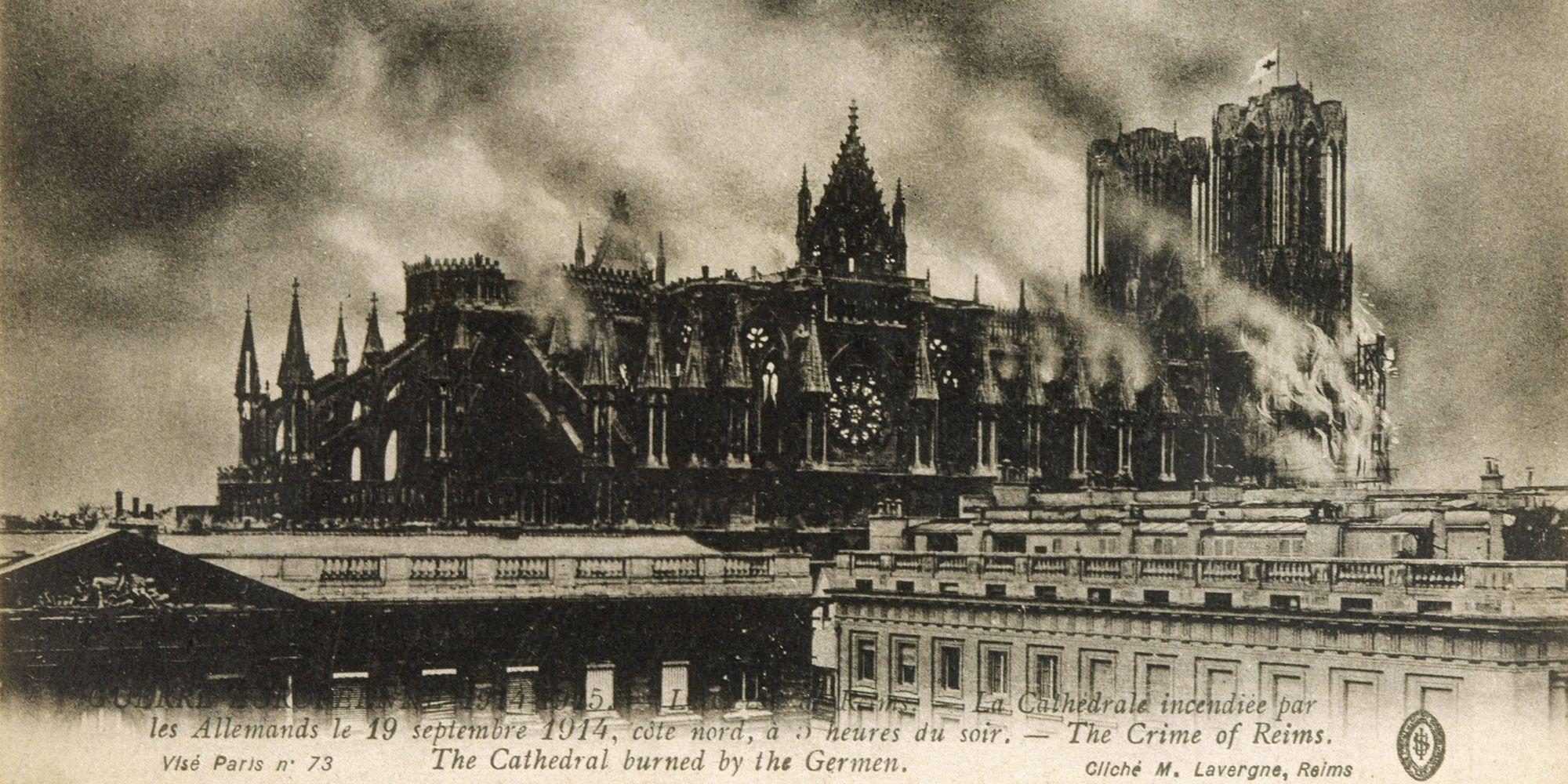
Sleeper gave the glass fragments to Gardner and had them set into a panel by local stained glass manufacturer Phipps, Ball & Burnham. She kept the notarized documents about the glass in her personal papers.
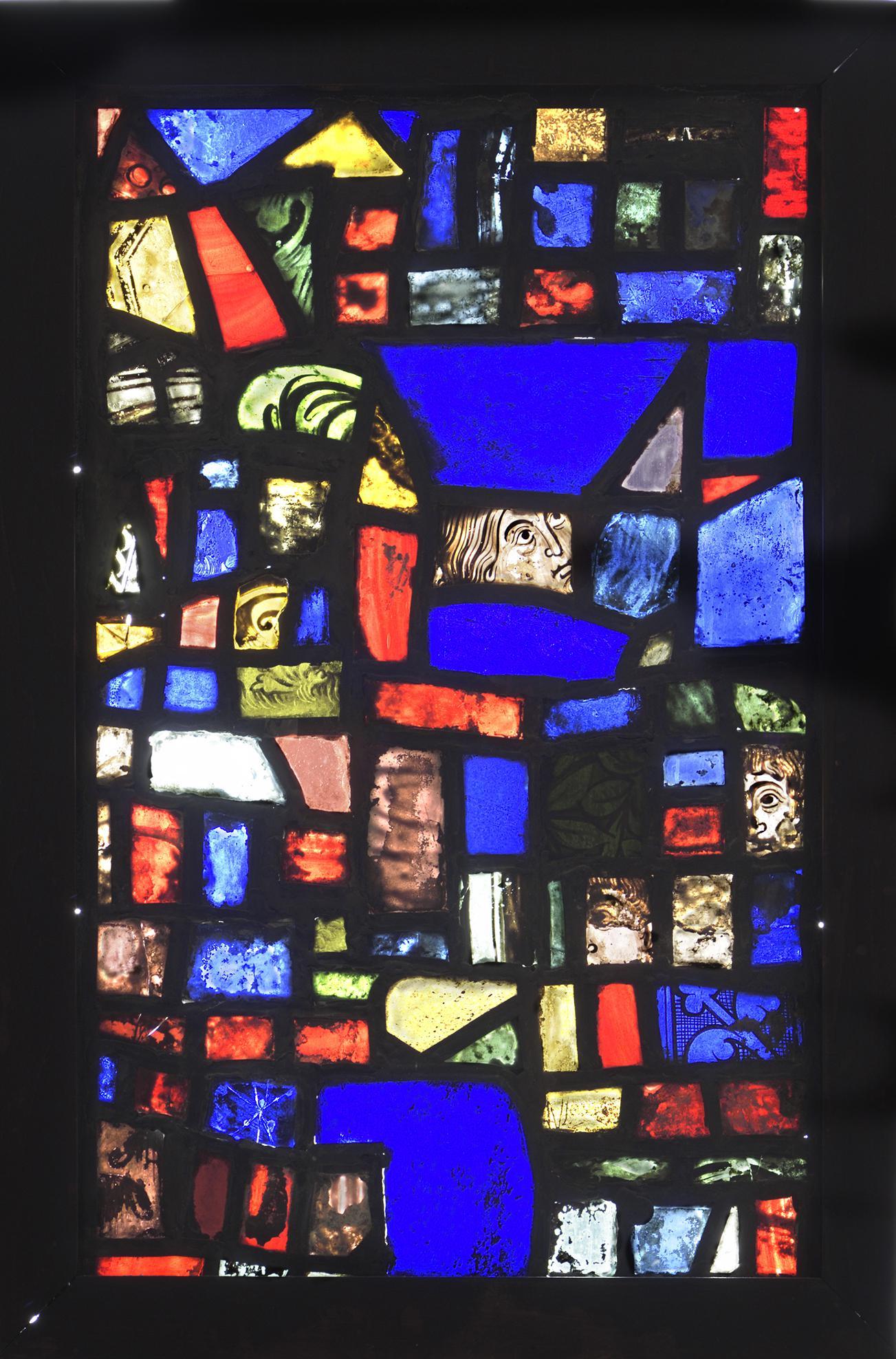
French, Reims, Fragments from Reims Cathedral, 18th century. Stained glass
Isabella Stewart Gardner Museum, Boston. See it in the Chinese Loggia
Sleeper’s innovative use of the fragments—and the collage aesthetic of the panel—speaks to one of his and Gardner’s shared passions: interior design. Sleeper was a professional decorator particularly interested in restoring old homes in Massachusetts.⁴ The best example of his particular aesthetic is his own home at the heart of Dabsville in Gloucester: Beauport (now Beauport, the Sleeper-McCann House).

Beauport, Sleeper-McCann House, Gloucester, Massachusetts
Photo: Eric Roth, Courtesy of Historic New England
The use of natural light to illuminate the Reims fragments in the Chinese Loggia evokes a similar installation of colored glass in Beauport’s Central Hall. Sleeper had specific themes for each room that reflected collections of different types of items, paints and wallpapers that he liked, and historical and cultural eras that he found interesting. Instead of focusing on a specific antique and curating the room around that, he used many objects and color palettes to design rooms. This was innovative at the time, and influenced the field of interior design as a whole.⁵

Amber glass in the Stair Hall of Beauport, the Sleeper-McCann House designed by Henry Davis Sleeper, Gloucester, Massachusetts
Photo: Eric Roth, Courtesy of Historic New England
In addition to the Reims fragments, there are several items in the collection that were gifts from Sleeper.
Like the Museum, Beauport has endured as a historical and cultural landmark in the U.S. However, unlike the Museum, Beauport was a home and a place Sleeper used as a show house to launch his interior design career. Beginning in 1916, it was featured in articles about interior design—leading to its owner securing jobs to design everything from private homes to movie sets.⁶ It’s unclear if Sleeper imagined Beauport persisting as a cultural landmark beyond his lifetime—it was sold after his death by his brother. Thankfully, it is now being cared for by Historic New England and provides insight into the friendship and aesthetics shared by two people who sometimes felt like outsiders: Sleeper and Gardner.
You May Also Like

Read More on the Blog
Summer Vacation in Gloucester

Explore the Museum
The Chinese Loggia

Read More on the Blog
Preserving our Colorful History: The Soisson Window
1 Kevin D. Murphy, “Secure from All Intrusion,” Winterthur Portfolio, vol. 43, no. ⅔ (Chicago, 2009), pp. 189–94.
2 Hayden, E. Parker, Jr. and Andrew L. Gray, Beauport Chronicle. The Intimate Letters of Henry Davis Sleeper and Abram Piatt Andrew, Jr. 1906–1915 (Boston, 1991).
3 Martha van Koevering, “Searching for the Past of Henry Davis Sleeper.” Historic New England, vol. 21, no. 1 (2020), pp. 20–2.
4 Murphy, pp. 215–17.
5 Shax Riegler. “The Legacy of Henry Davis Sleeper.” The Magazine ANTIQUES, accessed 2021. https://www.themagazineantiques.com/article/the-legacy-of-henry-davis-sleeper/
6 Shax Riegler. “The Legacy of Henry Davis Sleeper.” The Magazine ANTIQUES, accessed 2021. https://www.themagazineantiques.com/article/the-legacy-of-henry-davis-sleeper/
